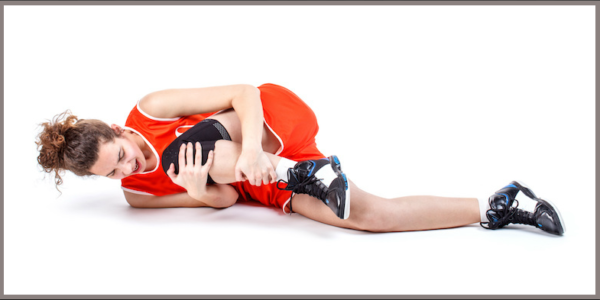And … here we are in basketball season. Did you know that female basketball players (actually all female athletes) are at greater risk of injuring their knees and hamstrings? Dr. Jeffrey Bean, a sports medicine specialist at OA Centers for Orthopaedics explains why.
With increased female participation in sports over the years, there has also been an exponential rise in knee injuries in the female athlete, with the ACL being the most common and most severe. Female athletes are more likely than their male counterparts to sustain a knee injury. Many published studies show knee ligament injury rates 5-6x higher in female athletes, some studies showing rates up to 10x higher.
We, therefore, focus on factors that can be modified. Females tend to have more muscle imbalances, with a higher quadriceps to hamstring strength ratio. Men tend to be more balanced and use hamstring to slow down from a sprint, providing increased stability to the knee. Females also tend to jump and land differently than men, having less neurogenic control, which is the ability to have nerves and muscles work together appropriately. They tend to have knee land straight and then buckle inwards, with more weight places through one leg. This all increases the instability in the knee.
Therefore, prevention is key to lessen the risk of ACL and other knee injuries. Having schools institute an ACL prevention program can help to decrease ACL injuries. OA Centers for Orthopaedics has an ACL program through all of our physical therapy offices – helping to recognize imbalances and then providing a program to help improve neuromuscular control and lessen risk.
Sports performance training
Andy Wight, from AW Strength & Conditioning, works with young athletes to help them get in shape and decrease their risk of injury. It’s called performance training. He says one of the most important things you can do to prevent injuries is to strengthen the glutes.
“The glutes are basically the powerhouse of the body,” he explained. “You want to focus in and around the hip joint or movement of the hip. That’s because in today’s society we do a lot of sitting and it’s common for people to have sleepy glutes as we like to say. The glutes aren’t working efficiently and people don’t always know how to activate them, so with performance training, we try to help fire up the muscles.”
He also says it’s not about how much weight a person can lift, it’s about being able to move properly.
We try to teach them how to be in control of their bodies in order to prevent injuries. There are two categories of injuries: A contact injury is when you run into somebody and dislocate a shoulder, break a leg, roll an ankle, something like that. A non-contact injury is when you’re running down the field and you go to make a cut and you tear a muscle, you tweak a knee, you roll an ankle. You’re just running and when you go to do a movement, you lose a little bit of control and it results in an injury. That’s the one we work on — to help control movement and prevent non-contact injuries.
In these short videos, Andy demonstrates three movements that are helpful for all athletes, male and female, but for basketball players, in particular.
Reverse Lunge
This is a reverse lunge using a slider. I really like this one because it allows a lot of recruitment for the glutes and hamstrings as that back foot slides backward. As you come up I always coach people to dig their heel into the floor and pull themselves up as opposed to trying to push themselves up.
A lot of times when we go into split movements like this our body will naturally try to cheat. Doing the exercise this way allows us to actually target our hamstrings and glutes, which are the movers, so to speak, for the lower body — the big movers.
This movement will help a lot with a change of direction but will also help you control deceleration of the movement. A lot of times it’s when somebody goes to stop or land that they will be injured.
Single Leg Romanian Deadlift
A single leg Romanian deadlift is a hinging exercise. It’s one of my favorite exercises to really isolate the glute. Instead of going really, really low, when people hinge forward I like them to stop when their hands get to about the knees. That helps isolate the glutes, which you want to tighten up.
Single Leg Squat (Lateral Step Down)
This is one of the most dynamic exercises because it involves a lot of balance control and single leg strength. I wouldn’t start somebody out on this exercise, it’s something we would work toward. It helps with decelerating, control, and balance. A lot of our athletes that we work with will wobble all over the place. This exercise helps reinforce good balance.
How about you? Do you have sleepy glutes? Let’s wake ’em up!



Leave A Comment